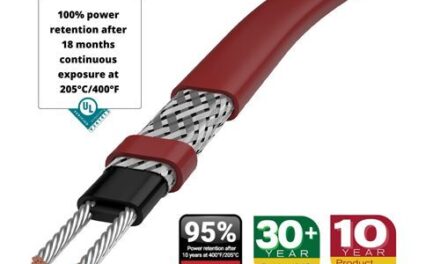
One year later, the first official project deadline is fast approaching. Whilst getting your first energy audit signed off may be all you’re thinking about right now, it’s important to remember that the audit alone won’t save you money. It is taking the initiative to implement more efficient processes and equipment that can make your facilities more energy efficient and save you a considerable amount of money.
It is essential to implicate production data, as a view of energy data alone won’t provide the information that is necessary for efficient energy management. Here Martyn Williams, managing director of COPA-DATA UK, discusses the importance of acting on your energy audit recommendations.
ESOS introduces a programme of regular energy audits for ‘large enterprises’. This means they employ at least 250 people or have an annual turnover in excess of £38,937,777 (or €50 million). December 5th, 2015 is the official deadline for submitting your first energy audit. The audit considers the energy used by your production line, office facilities and means of transport.
Completing an energy audit
If you qualify for ESOS and are yet to work towards your energy audit, you first need to appoint a lead assessor. An assessor will carry out and oversee your energy audits and overall ESOS assessment. A lead assessor can be one of your employees, but he or she must be a member of an approved professional body such as the Association of Energy Engineers or The Energy Managers Association. Alternatively, professional bodies are able to outsource assessors to businesses who are in need of one.
After completion you should submit your ESOS notification of compliance to the Environment Agency. This needs to happen before December 5th, 2015 and should be repeated every four years. You also need to keep a record of your compliance with ESOS in the form of an evidence pack. There is no set format for this, so your assessor can tailor it to suit your business.
What next?
You may have avoided a hefty fine by completing your energy audit, but the possibilities to save money don’t end there. If you want to go beyond compliance, you can implement ISO 50001. The standard is applicable regardless of the size of the company and industry it operates in.
The International Standard Organisation (ISO) estimated ISO 50001 could influence up to 60 per cent of the world’s energy use. The core principle of ISO 50001 is its ‘Plan-Do-Check-Act’ (PDCA) continual improvement framework.
The standard requires companies to develop a policy for more efficient energy use and fix targets and objectives to meet the policy. This includes the implementation of all types of technology from energy efficient light bulbs to smart meters and sensors.
Energy data management systems
One way of making sure your ESOS energy pack is up to date is to use an Energy Data Management System (EDMS). To truly make significant reductions in energy consumption, companies should implement an EDMS that allows the use of relevant measurement data across the array of your processes and sites. A good EDMS should be able to collect and process data from the entire equipment infrastructure of a production line. This means it should be compatible with all the major communication protocols, covering all the important standards, right up to individual drivers used in a specific application. Users can then request targeted queries from any sensor, meter, measuring device or machinery. Additionally, due to its hardware independence and impressive connectivity, integrating a good EDMS into existing infrastructures should occur smoothly, without any disruption.
Secondly, an EDMS must be scalable. As the company grows, the system should allow the seamless integration of new devices or machines. It should also facilitate the simple creation of new reports, data visualisation and straightforward addition of new users. Anyone from the CEO to the machine operator should be able to access the data that an EDMS collects at any time, and as the company grows this becomes even more important.
Another important feature is flexibility when it comes to the reporting function of an EDMS. The ability to generate reports based on both historical data and real time data according to the user’s needs is crucial. Displaying information such as energy performance indicators, trend curves, alarms, cost distribution or load duration curves in a clear way carries a lot of weight.
If you’re treating the Energy Savings Opportunity Scheme as a requirement, don’t expect to save money or improve your energy efficiency. ESOS should be a continuous process similar to that used in the ISO 50001 standard. This will guarantee better energy efficiency in the workplace and will put your mind at ease when it comes to your company’s carbon footprint.


